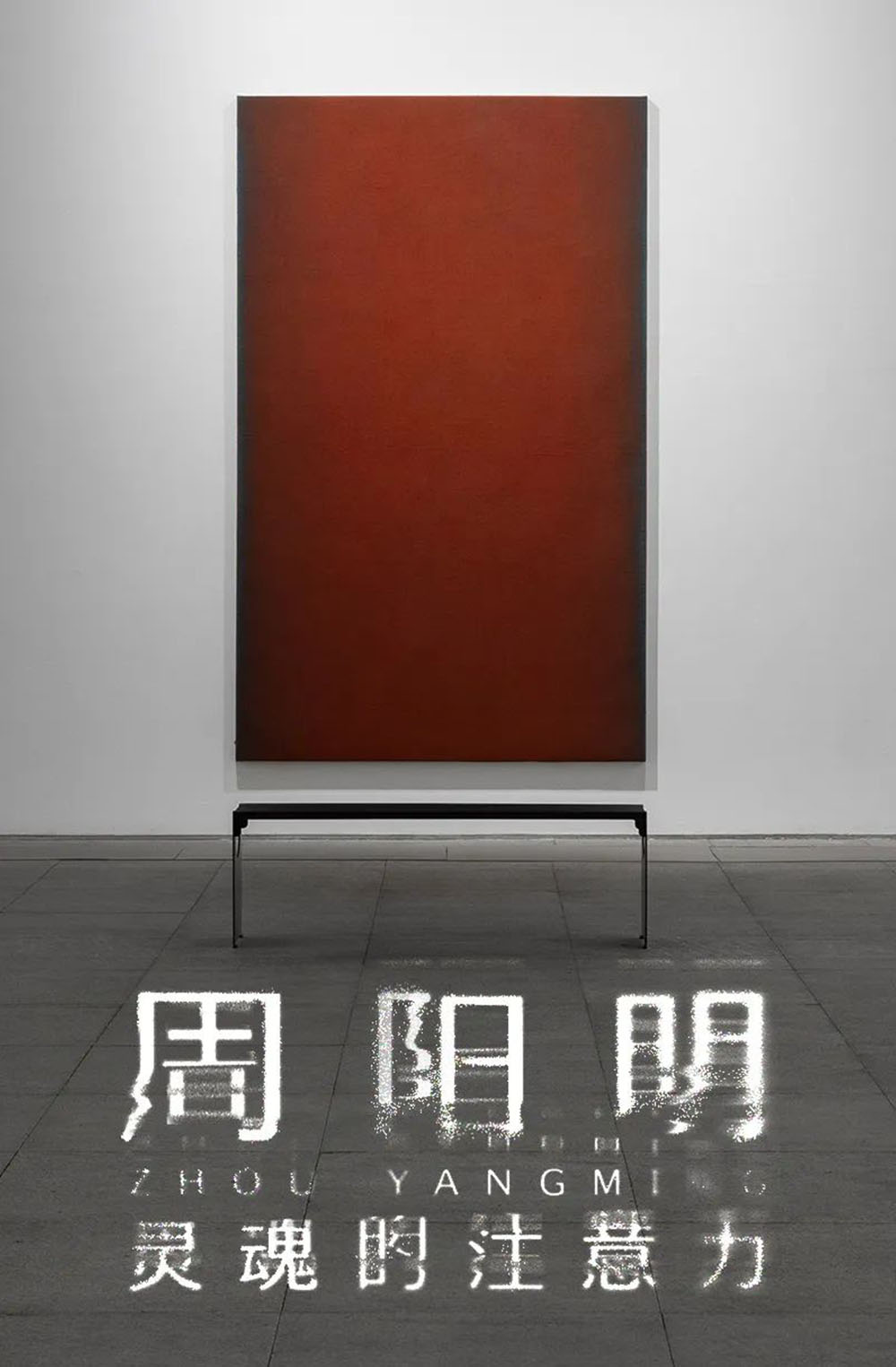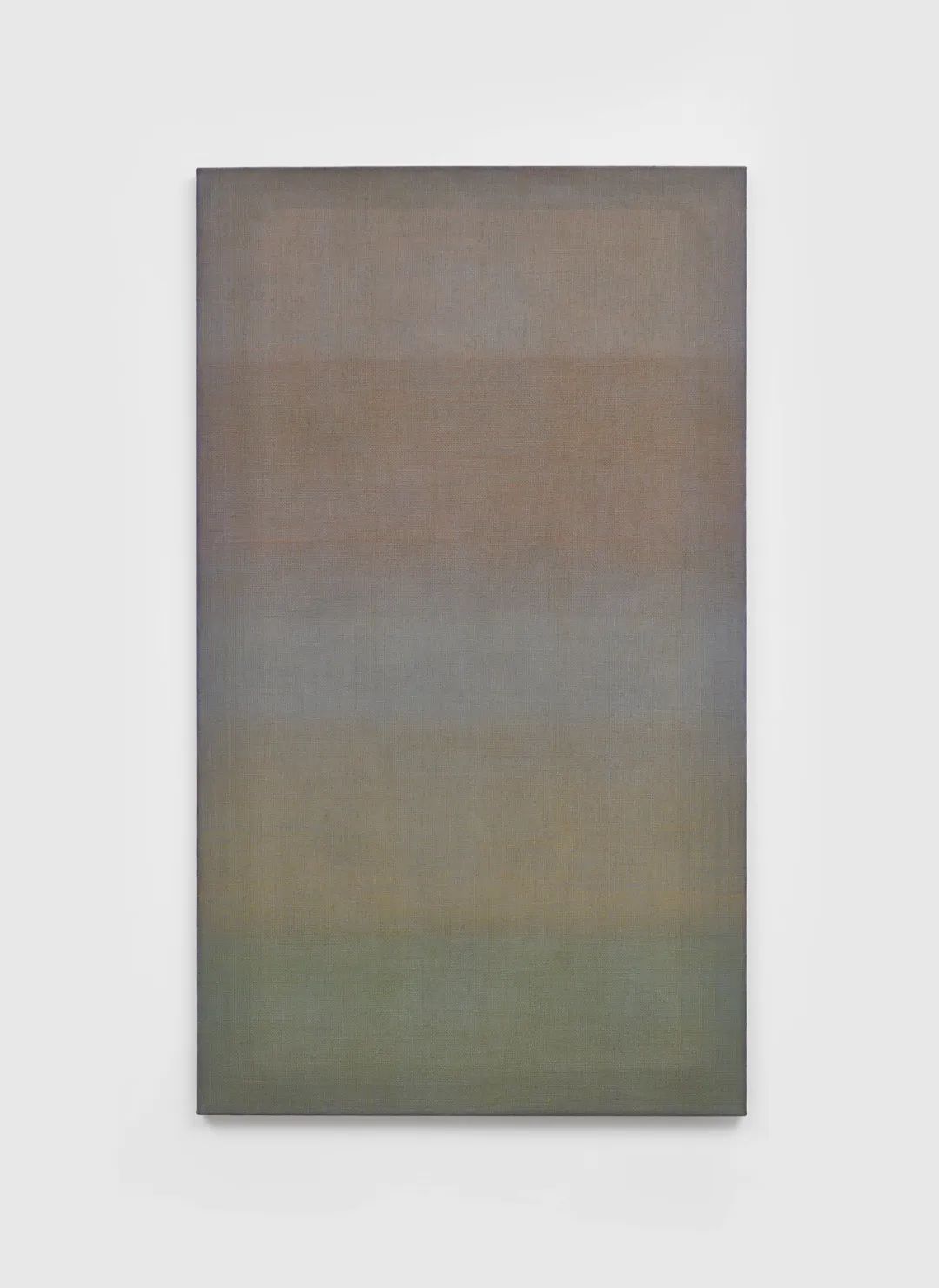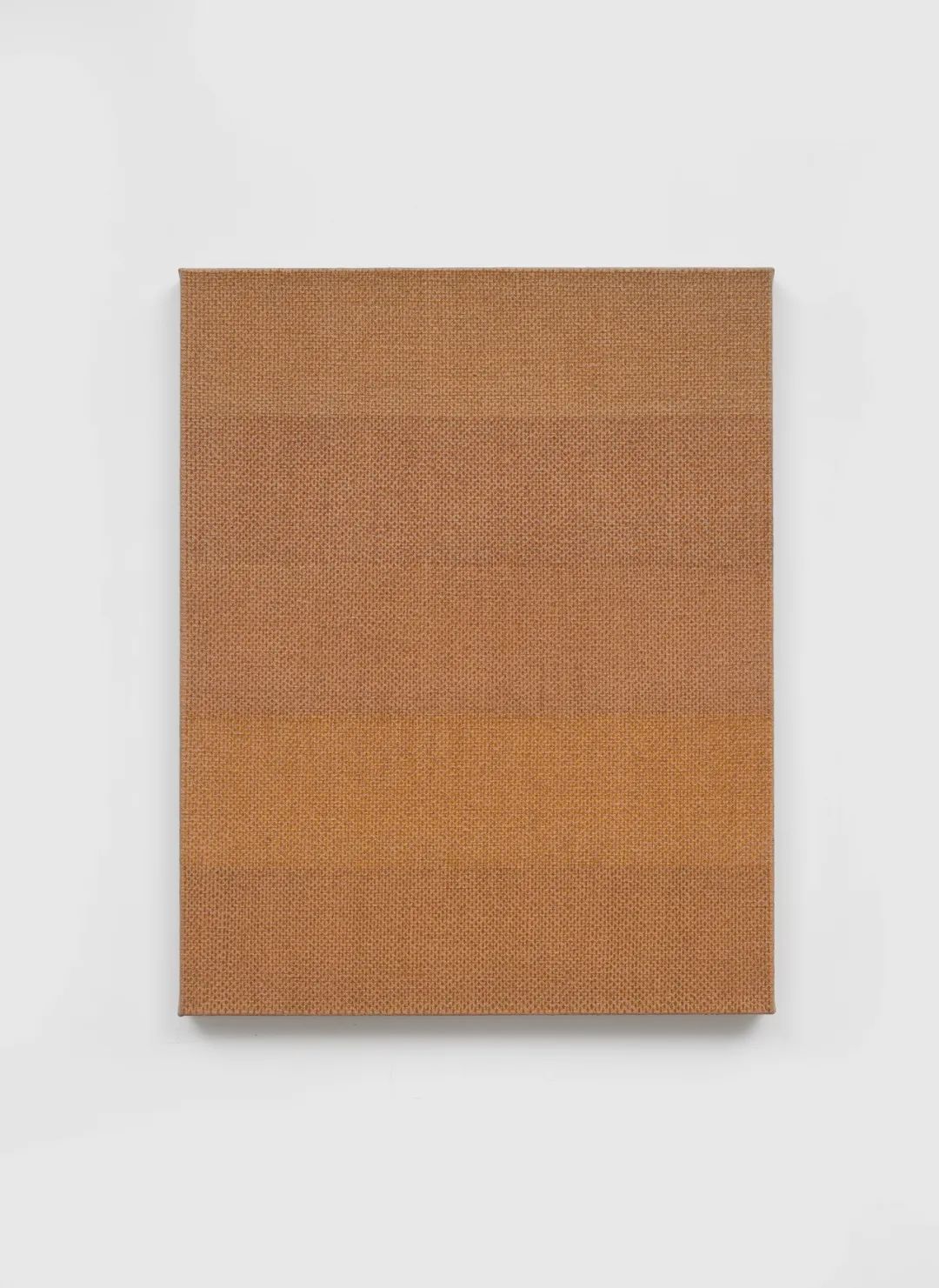
Abstract art is not the antithesis of reality but a means to deepen our understanding of the human spirit. Agnes Martin once said upon discovering her abstract visual language,“When you’re on the path to truth, you’re in harmony with everything.” What is truth, and what form does it take? In an era of competing for attention, how can one refinea sense of pure perception and summon the soul‘s attention?? Zhou Yangming began contemplating this very question more than thirty years ago.Twenty-one years after the influential 2003 exhibition Prayer Beads and Brushstrokes, his first solo gallery exhibition, I Saw the Truth, recently held at Whitebox Art Center in Beijing, offers a glimpse into his meditative "spiritual sanctuary" and the "truth" he has pursued through the language of abstract painting.
This exhibition features more than twenty of Zhou’s latest works, with critic Li Xianting serving as academic advisor and Xu Wei as curator. For over two decades, Zhou has obsessively pursued painting as a path—both affirming and dissolving the concept of "the One." Through the simplest techniques and imagery, he confirms a truth: nfinity is born not of unbounded freedom, but from disciplined solidity. In essence, Zhou’s work is not merely a repair of unity, but a continuous affirmation that unity must arise within a coherent system.
Philosopher Xia Kejun, professor at Renmin University of China, writes that Zhou’s paintings open up an inner space of the world’s soul. With each resolute stroke, the artist penetrates the linen’s texture, unlocking the painting’s interiority. This demands unwavering focus, where every stroke—like a vajra or a mark in sand—acts as a seed of Buddha-nature, one thought per stroke. Yet it also allows for purposeless dispersion, merging into a holistic breath. Xia notes that Western abstraction tends outward, while Chinese abstraction turns inward, regulating inner breath. The wholeness of breath and the seed-like quality of biology, akin to linen’s organic nature, reflect a Chinese replication that moves from multiplicity to biological growth, resisting the shadow of death.
During the exhibition, Zhou Yangming joined philosopher Xia Kejun, curator Xu Wei, and Whitebox director Sun Yongzeng in a roundtable conversation on the artist’s personal will and the language of painting. Selected excerpts are presented below by Oui Art.
Part01 Modality,from the Absolute Spirit
< Xu Wei > Curator
The theme I Saw the Truth declares a stance. We believe truth exists—not as a prefabricated, standard answer imposed by others, but as something solid, a return to one’s spiritual self and true freedom. This may seem provocative, as if claiming authority, but our aim is the opposite: to return that authority to you, helping you find your own truth in the present.
< Zhou Yangming > Artist
Painting is more than painting; art transcends its own realm. Human expression takes many forms—music, dance, poetry, literature—but painting holds a unique charm. Its expression is irreplaceable by other mediums.
< Xia Kejun > Philosopher
A Western critic once remarked that people should stand in front of an image rather than behind a screen. Before a painting, we can pause, contemplate, and gaze—a holistic perception impossible with AI, screens, or virtual spaces. It’s about a totality—a holistic breath of the soul’s attention. This lingering, this immersion, is the experience painting affords in our contemporary condition. In Zhou’s paintings, we witness the emergence of a subject of will—an absolute subject. For over twenty years, he has followed a single line—echoing Laozi’s “Out of Tao, One is born;Out of Two, Three;Out of Three, the created universe."—embodies this will. Its formalization marks the emergence of a Chinese painting subject, where autonomy arises from the correspondence between the artist’s will and formal language.

Part02 We were swept away - it was the consequence of the information tsunami.
< Xu Wei >
How does painting retain necessity in today’s clamor? When was the last time we contemplated anything at length? Fragmentation dominates; our attention spans are short, lacking breath’s wholeness. Now, the craving for an inner spiritual space is more urgent than ever.
< Sun Yongzeng > Whitebox Art Center, Director
Painting endures because it offers emotional solace, spiritual elevation, and guidance—a timeless value. Amidst the deluge of concepts, techniques, and media, we’re like disaster victims, overwhelmed by information’s tsunami. Many feel swept into chaos, resisting passively. But art can restore quietude, letting us feel life’s wholeness. In fragmented times, even half an hour of quiet reading at home is a luxury. We must ask: What has art given us? Why can’t we face subtle, genuine feelings? The loss stems from inexperience with such relentless information, leaving us spiritually torn and oxygen-deprived, grasping for external supports. Humanity’s recent chaos—moral decline, injustice, global turmoil—is unprecedented. We’re post-tsunami orphans, adrift.
< Zhou Yangming >
I want to return this sovereignty of appreciation to you. Attention is something you can consciously command. Approach my works as you would ordinary objects—what do you perceive? I invite you to look, simply honoring your own unfiltered impressions. Shed all distractions, preconceptions, and inherited notions—this is crucial. Today, our minds are overcrowded; we're inundated with excessive information from all directions. What I hope is for everyone to return to essence and find stillness.
< Sun Yongzeng >
The reason we still cherish art lies in its refusal to drown us in superficialities—those tsunami-like waves of ephemera. Instead, it guides us back to serenity, allowing us to experience life's wholeness. We must resist fragmentation, that state where our inner soul and spirit lie in tatters, granting us not a moment's peace.
Consider how rare it is to claim an uninterrupted hour in modern life—forget discussing paintings here—even reading quietly at home with a cup of coffee has become an extraordinary luxury. This demands reflection: What has society imposed upon us? What has art truly offered in recent years?
I've been contemplating why we've grown incapable of confronting subtle, authentic feelings—why such sensitivity has atrophied in our era. Partly, as noted, we're unequipped to process the deluge of information assaulting us. These fragmenting forces leave us spiritually lacerated, gasping for oxygen, perpetually clutching at external lifelines to sustain our existence—no longer awakening naturally to life's simple sensations.
On a human level, these years manifest unprecedented disorder: eroding morality, social injustice, global turmoil. Society's turbulence has made us post-tsunami orphans—this homelessness of the soul is palpable.

Part03 Rebuilding the ability to calm oneself down
< Sun Yongzeng >
In such chaotic and disordered times, we as individuals often feel powerless. The only thing we can do is to rebuild and restore inner order within ourselves—to find something steadfast amidst the turbulence, something to hold onto for stability and peace. This, I believe, is truly precious.
Yet what we must seek ultimately lies within—it is our inner strength, our intrinsic capacity for self-renewal. Too often, we exhaust ourselves searching for external solutions, but even the mightiest ship cannot withstand such a tsunami. In our era, these anchors of stability and permanence are vital—they form the very foundation of meaningful existence.
The world may appear meaningless, but it is our imperative to uncover its significance. The irony is that while this pursuit itself holds profound meaning, we often remain blind to it, dismissing it as futile. Yet through this process, each person arrives at their own existential realization.
Art, at its most fundamental, offers solace. It reshapes our inner landscape, elevates our consciousness, and lifts us above the chaos—granting a transcendent perspective. When the floodwaters rise, art becomes our vantage point. Standing higher, we find ourselves less battered by the storm. This is no abstract ideal, but a most authentic human necessity—a spiritual imperative for our age.

< Xu Wei >
As Director Sun said, we’re spiritually homeless orphans, needing art to guide us home. Art’s path isn’t just about free will—it’s the space to return to your solid core, holding all anxieties. We agree: this era needs such art, and we champion it in our ways.
< Xia Kejun >
When you enter an art space and feel its temple-like presence, your inner world begins to unfold. Our brains actually have no connection with our inner selves. Our brains, our vision directly leads to another world, pulling the brain and the world back to our inner soul city. Even sadness, at this moment, is not much because we have not established an inner soul space in this impoverished era. I think Zhou Yangming's paintings can build the inner soul palace, awakening us to establish such an inner soul space in our own way. In our era, the most important thing is our instantaneous thoughts, these meaningless dissipating thoughts, they need a true spiritual power to lead. I think this is the will of this era. (Each stroke of the painting) is a wish. You need to fix this wish, so that the thought and the power of the thought can acquire a spiritual structure, and it is an unseeable and unobjectifiable one. Another important point is that it seems that each of them is irrelevant and fragmented moments, but his paintings as a whole have some very touching inner things (because) it has a coherent energy protecting countless moments that seem to be about to disperse, unbreakable, like a package that makes it an integral whole (and this) is the perfect formation of the overallity of the soul's breathing.
< Zhou Yangming >
That’s what I strive for.Through the process of construction, you come to feel your own constructive energy. That energy enable your own growth toward your authentic self.
Part04 The upward-spiraling artistic conception of the Eastern style
< Zhou Yangming >
In essence, according to our traditional Chinese view, art is about cultivating one's mind and nurturing one's character. At its core, all artistic endeavors are actually aimed at benefiting people. To put it plainly, art is about nourishing the heart.
< Xia Kejun >
This inner spiritual space is evolving and it is biological in nature.Unlike American abstraction, Chinese abstraction is not driven by nihilism. There’s no age more nihilistic than ours, which is why we need a counter-force. Through Chinese color—its yellows, its greens—we activate life and vitality. Each stroke must rise with intention. Zhou’s red painting May 13, Year of the Dragon embodies such a moment. In Europe, abstraction is expressionistic, outward, often confrontational. As for American abstract art, Clement Greenberg said that we do not do European painting, do not express literature, but return to the plane. But Chinese abstraction is different—it’s inward, atmospheric, soul-breathing. These paintings don’t just appeal to vision—they draw you into a realm of inner fullness. Only with that fullness can the spirit rise. Zhou’s work carries this upward force. Because each has an essence, when you imagine this inner essence, let the viewer not only remain in the visual realm, but also return to the fullness of the inner life. You can only have the strength to rise with a full and complete soul breath. The works of Zhou Yangming have an upward force. This is a declining era, as philosophers have always regarded it as a decline (era), so there is lying down, economic recession, destruction. Then in this (declining) era, you must reverse, to rise at a high frequency.

Producer:Tiffany Liu
Editor,Writer:Tiffany Liu
Internship Assistant:Eva Wang
Designer:Nina
Images and materials provided by White Box Art Center





